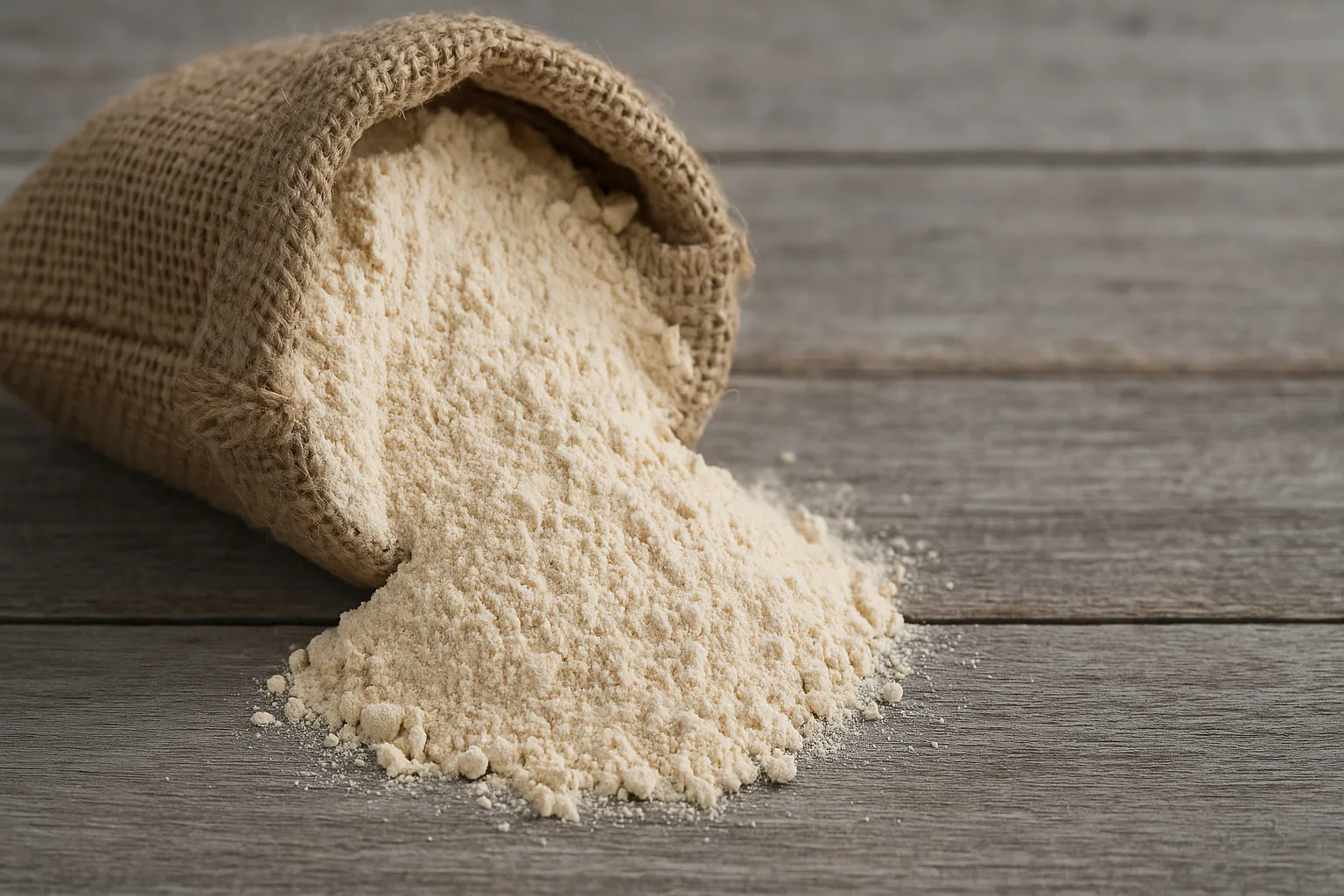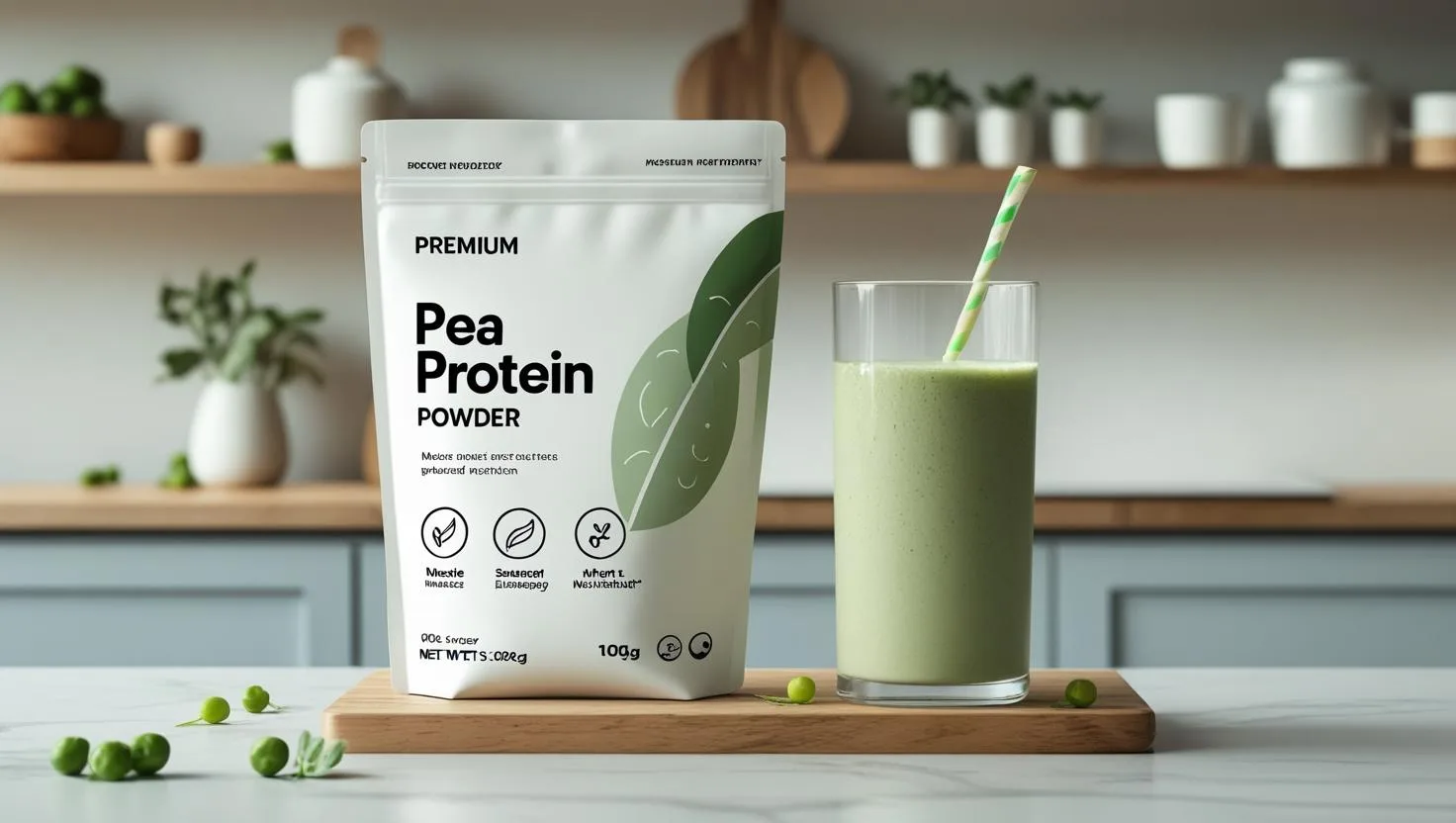Pea Protein: The Clean, Powerful Ingredient for Sports Nutrition & F&B
August 26, 2025

Pea protein has rapidly become one of the most versatile and in-demand ingredients in the plant-based space. Celebrated for its complete amino acid profile, hypoallergenic properties, and adaptability, it’s now a core component in protein powders, functional beverages, protein bars, and a growing range of food and drink products.
For brands developing innovative products in sports nutrition and functional foods, pea protein offers a unique balance of performance, sustainability, and consumer appeal. With the right supplier, it can become the backbone of a high-quality, market-leading formulation.
Why Pea Protein is Leading the Plant-Based Revolution
Complete Nutrition with a Plant-Based Advantage
Pea protein provides all nine essential amino acids, including high levels of branched-chain amino acids (BCAAs) like leucine, which are crucial for muscle recovery and growth. Its natural digestibility and balanced amino acid profile make it a strong alternative to animal-based proteins—ideal for athletes, active consumers, and health-conscious individuals.
Unlike many other protein sources, it is naturally free from common allergens such as dairy, soy, and gluten, allowing it to fit into a wide range of dietary needs
Clean-Label Ingredient Consumers Trust
Modern shoppers want simple, recognizable ingredients. “Pea protein” is short, clear, and easy to understand. This transparency supports clean-label positioning, a growing priority in sports nutrition and F&B.
Its allergen-free nature also eliminates the need for “may contain” disclaimers that can deter potential buyers, making it easier for brands to reach broader audiences.
Sustainability That Sells
Pea plants are nitrogen-fixing crops, which naturally enrich the soil, reduce dependency on synthetic fertilizers, and help preserve biodiversity. Their low water usage and smaller carbon footprint compared to animal protein make them a responsible choice for eco-conscious consumers and brands.
This sustainability story is a valuable marketing tool, especially for companies that prioritize ethical sourcing and environmental impact.
How Pea Protein Fits in Sports Nutrition & F&B

Pea protein’s adaptability means it works in a wide variety of product types. Here are some of the most popular and profitable applications:
1. Sports Nutrition Shakes & Powders
- Perfect for post-workout recovery thanks to its high BCAA content.
- Easily blends into powders and ready-to-drink (RTD) shakes without a gritty texture.
- Suitable for stand-alone protein products or as part of a plant-based protein blend with other sources like rice protein.
2. Protein Bars & Functional Snacks
- Enhances nutritional value without compromising taste or texture.
- Works well in high-protein bars, bites, cookies, and even savory snacks.
- Maintains a clean-label appeal while delivering satisfying satiety for consumers.
3. Plant-Based Dairy Alternatives
- Adds creaminess and protein to dairy-free milks, yogurts, and ice creams.
- Helps plant-based dairy match or exceed the protein levels of cow’s milk, making these products more appealing to health-focused buyers.
4. Meat Alternatives
- Provides structure, chew, and protein density in plant-based burgers, sausages, and nuggets.
- Neutral flavor allows for authentic taste replication using herbs and spices.
- Supports complete protein profiles when blended with complementary plant proteins.
5. Functional Beverages & Smoothies
- Can be used in meal replacement drinks, energy smoothies, and even clear protein beverages.
- Modern processing techniques improve solubility and reduce aftertaste, expanding beverage possibilities beyond traditional shakes.
Pea Protein in the Sports Nutrition Market
The sports nutrition category is one of the fastest-growing areas for pea protein, driven by the shift toward plant-based performance products. Key reasons athletes and active consumers prefer it include:
- Muscle Support – High BCAA content for muscle repair and maintenance.
- Endurance Fuel – Steady release of amino acids to support prolonged activity.
- Gentle Digestion – Well-tolerated compared to whey or soy for those with sensitivities.
Formulators often combine pea protein with other plant proteins to enhance the amino acid profile while maintaining excellent taste and texture.
Trends Driving Pea Protein’s Growth
Shift to Plant-Based Diets
With more consumers moving toward flexitarian, vegetarian, and vegan lifestyles, pea protein offers a nutritious, sustainable alternative to animal-derived proteins.
Innovation in Product Development
Advances in food technology have improved flavor, mouthfeel, and solubility, making pea protein a viable choice for previously challenging applications like clear sports drinks and fortified bakery goods.
Transparency and Traceability
Shoppers increasingly want to know where ingredients come from and how they’re made. Brands can highlight pea protein’s traceable sourcing and eco-friendly cultivation to strengthen trust and loyalty.
Choosing the Right Type for Your Application
Selecting the right format of pea protein is essential to achieving the desired nutritional, sensory, and functional results.
- Pea Protein Isolate – Higher protein content, low in carbohydrates and fat. Best for sports nutrition, beverages, and high-performance functional foods where purity and solubility are key.
Partnering with a supplier that offers both forms ensures flexibility in formulation while meeting specific performance, cost, and sensory goals.
The Future of Pea Protein in F&B and Sports Nutrition
As consumers increasingly value health, sustainability, and transparency, pea protein is positioned to remain a top-tier ingredient for innovative product development. Brands that incorporate it effectively will be able to meet evolving market demands while standing out in competitive categories.
Its versatility allows it to cross over between indulgent and functional products, making it equally suitable for a protein-packed dessert as it is for a post-workout recovery shake. With continued investment in flavor-masking, solubility improvements, and processing innovations, the potential applications will only expand.
Final Takeaway
Pea protein is far more than a plant-based trend—it’s a nutritional powerhouse that offers a unique combination of performance, health, and sustainability benefits.
Whether the goal is to create a clean-label sports supplement, a creamy dairy alternative, a high-protein snack, or a plant-based meat with authentic texture, pea protein delivers. For brands aiming to innovate in sports nutrition and functional food markets, it’s the smart ingredient choice for today and the future.